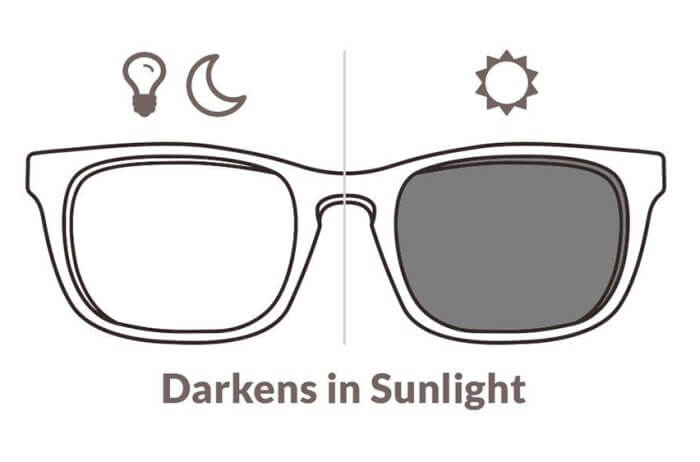Understanding Photochromic Lenses: Why Aren’t They Turning Dark?
- BY Steven Lee
- IN Billboard
Photochromic lenses are a remarkable innovation that automatically change from clear indoors to tinted outdoors. This light-reactive feature, achieved through a special film in the lens, allows them to darken in response to UV light exposure. However, you might notice that your photochromic lenses don’t turn as dark as expected or change only slightly. Let’s explore the reasons behind this and how to make the most of these lenses.

What Factors Affect Photochromic Lens Darkening?
Several factors influence the darkness level of your photochromic lenses:
- UV Light Intensity: The amount of darkness depends on the amount of UV light present. In sunny weather, your lenses are more likely to reach their darkest state.<
- Air Temperature: Photochromic lenses can react differently based on the surrounding temperature. In colder weather, they might darken more effectively.
- Lens Material: The type of lens material can affect the speed and extent of darkening. Some materials respond more quickly to UV exposure.
- Lens Age: Newer photochromic lenses tend to take longer to change from clear to dark as well as not getting as dark as they will over time.
What are the Optimal Conditions for Photochromic Lenses to Darken?
To maximize the performance of your photochromic lenses, consider the following factors:
- Overcast Weather without Direct Sunlight: Photochromic lenses work best in sunny and cold conditions. They may take anywhere from 35 seconds to two minutes to darken, depending on the specific lens and weather conditions. It’s important to note that they might not reach their darkest state until around 15 minutes of continuous UV exposure.
- Driving: Photochromic lenses typically do not darken inside cars due to UV protection provided by windshields. However, if you’re interested in photochromic lenses that work in the car, you can explore Transitions® XTRActive Polarized lenses, which will tint behind the wheel.
- Understand Indoor Use: Photochromic lenses generally do not darken indoors due to the lack of direct sunlight. They rely on UV light exposure to trigger the tinting process.

How Can I Make the Most of My Photochromic Lenses?
Photochromic lenses are a valuable addition to your eyewear collection. To fully enjoy their benefits:
- Embrace Outdoor Activities: When you’re outdoors in bright and sunny conditions, your photochromic lenses will work most effectively. They provide excellent protection from harmful UV rays while ensuring clear vision.
- Carry Sunglasses for Specific Situations: In situations where your photochromic lenses might not darken, like overcast weather or driving, consider carrying a separate pair of sunglasses with UV protection. This way, you can have proper eye protection at all times.
- Explore Polarized Options: If you’re frequently in the car and desire lenses that darken while driving, Transitions® XTRActive Polarized lenses could be the perfect fit.
By understanding the behavior of photochromic lenses and using them in suitable conditions, you can make the most of their innovative features and enjoy comfortable vision in various light conditions. Explore the following photochromic options to determine which lens best suits your lifestyle needs.
- Vision Ease LifeRx® Polycarbonate
The best selection for someone who requires an impact-resistant photochromic lens.
- Zenni® Photochromic
The best selection for someone who wants a photochromic lens at our every day affordable prices.
The best selection for someone who wants a photochromic lens at our every day affordable prices and the added coverage of industry-leading blue light protection.
The best selection for someone who wants a darker photochromic lens that fades back to clear faster.
The best selection for someone who deals with a lot of reflective glare, and light sensitivity, or wants a photochromic lens that darkens in the car.
Recommended Frames for Transitions® XTRActive Polarized™:
Shop Transitions® Glasses at Zenni
Shop All Zenni Glasses
Find More Information about Transitions Lenses
About the Author: Dr. Steven Lee
Dr. Steven Lee is a visionary leader in the eye care and telemedicine sectors and has built a remarkable career by combining his formal training in eye care, engineering expertise, and a passion for innovation. Dr. Lee serves as Zenni’s the Head of Optical Product.
Here is an FAQ schema for the blog post:



